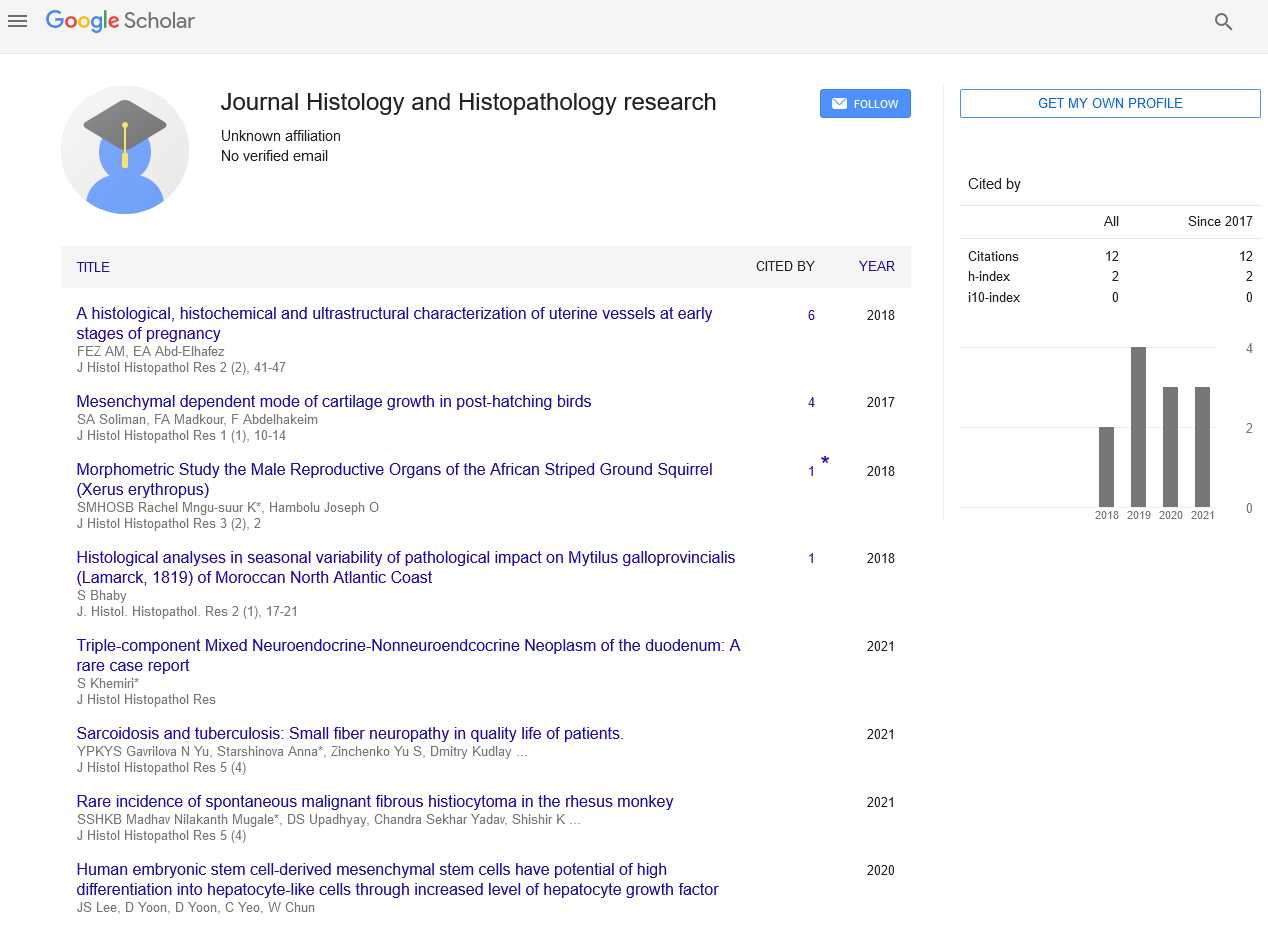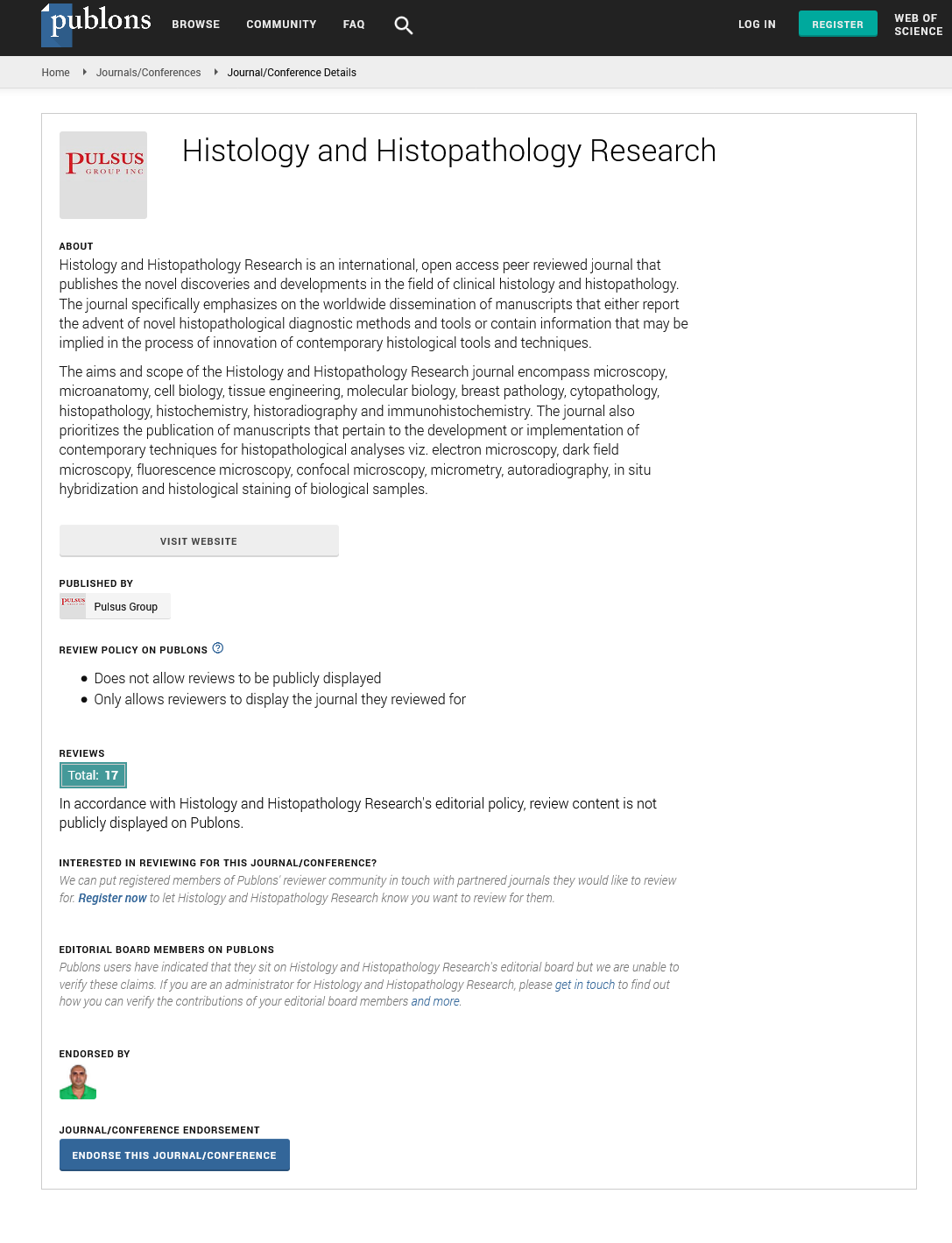Assessment using clinical and histological data of toluidine blue absorption in oral lesions that may be cancerous in vivo
Received: 02-Jul-2022, Manuscript No. PULHHR-22-5544 ; Editor assigned: 04-Jul-2022, Pre QC No. PULHHR-22-5544 (PQ); Accepted Date: Jul 18, 2022; Reviewed: 15-Jul-2022 QC No. PULHHR-22-5544 (Q); Revised: 16-Jul-2022, Manuscript No. PULHHR-22-5544 (R); Published: 26-Jul-2022, DOI: 10.37532.pulhhr.22.6(4).85-86.
Citation: Wells N. An assessment of the thyroid cytopathology reporting system used in Bethesda. J Histol Histopathol Res. 2022;6(4):87-88.
This open-access article is distributed under the terms of the Creative Commons Attribution Non-Commercial License (CC BY-NC) (http://creativecommons.org/licenses/by-nc/4.0/), which permits reuse, distribution and reproduction of the article, provided that the original work is properly cited and the reuse is restricted to noncommercial purposes. For commercial reuse, contact reprints@pulsus.com
Abstract
Toluidine Blue (TB), a dye that belongs to the thiazine family of metachromatic pigments, is only partly soluble in both water and alcohol. To highlight Potentially Malignant Oral Lesions (PML), TB has been employed as a crucial stain. It may also reveal early lesions that a clinical examination might miss. In addition, it can show the complete length of the dysplastic epithelium or carcinoma when excisions are intended, find multicentric or secondary tumours, and aid in the follow-up of oral cancer patients. When choosing the biopsy sample location in PML and getting minimal control of cancer, it is helpful. Lesions stained with TB may show Loss of Heterozygosity (LOH). However, there is disagreement over the clinical interpretation of these variations. TB staining may appear as a Dark Royal Blue or a Pale Royal Blue color. Despite this, the TB test appears to be highly sensitive (97.8-93.5%) but less specific (92.9%-73.3%), mostly due to false positive findings.
Introduction
The high density of nuclear material, the lack of cell cohesiveness, and the enhanced mitoses are a few theories that have been put out regarding the absorption of TB in dysplastic lesions and carcinomas. Despite this, there aren't many experimental research on how TB affects different tissues, thus it's unknown what TB does to the histology when it enters the body.
In addition, no studies have yet been done to examine the connection between the dye's histology uptake and the staining's clinical intensity. The method for making a Galenic TB solution and the procedure for applying the solution both adhered to Mashberg's suggested guidelines.
The same examiner always assessed the clinical absorption of stain, and only instances with a positive stain were chosen. According to how intense the stain was, these were separated into two groups: Dark Royal Blue and Pale Royal Blue. The lesion itself wasn't penetrated with local anaesthetic in order to prevent artefacts. A scalpel was used to remove a sample from each lesion that included the most heavily stained region. Because TB staining is unstable in fixing solutions, biopsies were promptly processed after being dry preserved. We utilised frozen sections (-25C) since the tissue dehydration required for paraffin-wax inclusion can eliminate the TB.
From each sample, two adjacent sections were taken in order to have comparable sections for the histological diagnosis and the histological TB assessment. A 4 l m section was taken for a morphological analysis with standard hematoxylin-eosin staining, and a 10 lm section was put for 10 seconds in xylene to assess the distribution of TB. An experienced pathologist evaluated the hematoxylin-eosin stained samples in accordance with WHO guidelines. The classification of lesions as malignant or benign depended on whether they had an epithelial dysplasia, invasive oral squamous cell carcinoma, or carcinoma in situ. If there was a stain in the granulation tissue, the absorption of TB was thought to be extra-epithelial (sub-epithelial staining was never seen). When the stained epithelium's thickness was less than 20 lm, intra-epithelial staining was deemed superficial; if it was greater than 20 lm, deep. When TB absorption was discovered in the cytoplasm and in parakeratotic layers, it was regarded as extra-nuclear. Dark Royal Blue-Malignant Lesions (DM), Dark Royal Blue-Benign Lesions (DB), Pale Royal Blue-Malignant Lesions (PM), and Pale Royal Bluebenign lesions were used to categorise the cases (PB). To the best of our knowledge, this is the first prospective research to examine the in vivo tissue and cellular absorption of Toluidine Blue (TB) from a clinical and histological point of view in oral Possibly Malignant Lesions (PML). As was said above, there aren't many experimental research on how TB affects different tissues, and those that do exist are solely based on case studies. Despite being based on a limited number of lesions, the current study is the biggest set of lesions in which the tissue and cellular distribution of TB has been assessed, and it confirms the significance of the nuclear uptake as the histological analogue of a Dark Royal Blue stain. Additionally, it plays a critical role in distinguishing between the malignant and benign tumours' distinct histological patterns of Dark Royal Blue stain absorption.
Pale Royal Blue staining was absent in all malignant lesions, and it exhibited no appreciable correlation with any of the tissue or cellular factors taken into account. There hasn't been consensus on the significance of Dark vs Pale Royal Blue staining in the TB test up to now. According to our findings, the Dark Royal Blue stain is the sole result of the TB test that is considered to be positive. Better specificity and biopsy site detection would likely be possible if just Dark Royal Blue stain was considered a positive TB test; however, a bigger investigation is required to support this idea. In contrast, Epstein15's LOH data indicated that the Pale Royal Blue stain may have prognostic value. Early oral carcinogenesis has been shown to involve the loss of certain chromosomal areas that contain known or suspected tumour suppressor genes, and the pattern of such loss might indicate the likelihood that premalignant lesions would proce--ed. The found histological discrepancies between DM and DB stains may be comparable with their previously reported disparities in the computerised calorimetrical analysis28, but more research is required. Only malignant lesions showed nuclear uptake of the dye, which is consistent with the prior theories put on the high density of nuclear material in neoplastic cells. Herlin also discovered absorption in the nuclei of inflammatory cells; however, because subepithelial staining was never seen in our investigation, we were unable to validate this finding. Herlin, of course, did not undertake in vivo labelling, but stained samples following excision, which may have aided inflammatory cells' absorption into the connective tissue. The presence of profound epithelial absorption in DM lesions may support the hypothesis that a histological abnormality assisted in TB penetration.
In line with Herlin, we discovered a nuclear rather than an intercellular absorption of dye as reported by Strong, who emphasised the existence of intercellular canaliculi that were bigger than in normal tissue.






